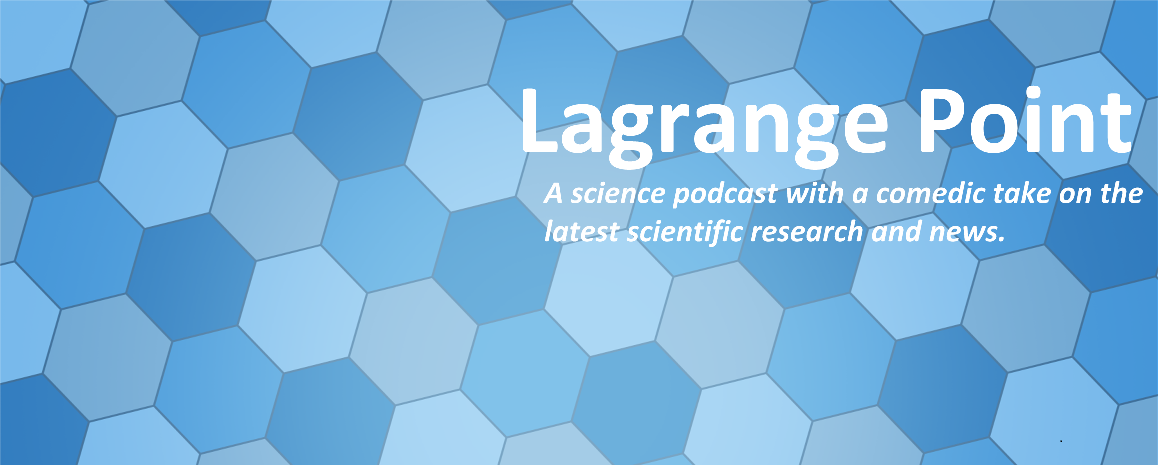Episodes
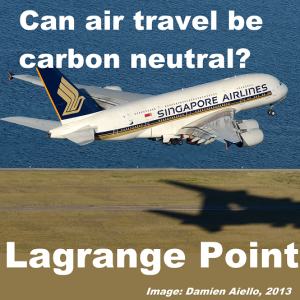
Monday Jun 17, 2019
Episode 331 - Making modern technology less energy intensive
Monday Jun 17, 2019
Monday Jun 17, 2019
Our modern world relies on energy, and some of it produce a lot of carbon dioxide. How can we make everything from air travel to wearable tech be less carbon intensive? Is there a way to make jet fuel or power ships that is carbon neutral? Just how much energy do crypto currency burn up? What is the impact of all this Bitcoin speculation on the health of the planet? From Fitbits to smart watches and Pokemon Go, wearable tech is a big trend, but how can we make these devices power themselves. There is a lot of excess energy when we walk and move, so can we use this to power our technology?
References:
- ETH Zurich. (2019, June 13). Carbon-neutral fuel made from sunlight and air. ScienceDaily. Retrieved June 15, 2019 from www.sciencedaily.com/releases/2019/06/190613103146.htm
- Christian Stoll, Lena Klaaßen, Ulrich Gallersdörfer. The Carbon Footprint of Bitcoin. Joule, 2019; DOI: 10.1016/j.joule.2019.05.012
- Michael G. Stanford, John T. Li, Yieu Chyan, Zhe Wang, Winston Wang, James M. Tour. Laser-Induced Graphene Triboelectric Nanogenerators. ACS Nano, 2019; DOI: 10.1021/acsnano.9b02596
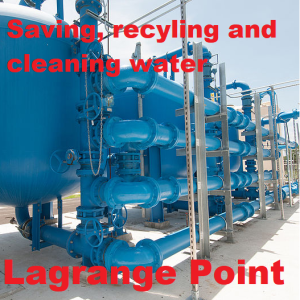
Monday May 13, 2019
Episode 326 - Capturing, reusing, recycling and cleaning water.
Monday May 13, 2019
Monday May 13, 2019
Water is essential for life, but we need to take care of the complete water cycle. Treating waste water can help remove harmful pollutants from cosmetics and medication. Industrial processes and landfill can also make super salty water, that we need to clean before releasing. Without good water management then we can end up without water in times of drought, and in times of flood more water than we can handle. This week we find out about ways to better manage the most precious of resources, water.
References:
- Qian Yang, Bridget R Scanlon. How much water can be captured from flood flows to store in depleted aquifers for mitigating floods and droughts? A case study from Texas, US. Environmental Research Letters, 2019; 14 (5): 054011 DOI: 10.1088/1748-9326/ab148e
- Rui Zhao, Tingting Ma, Shuying Li, Yuyang Tian, Guangshan Zhu. Porous Aromatic Framework Modified Electrospun Fiber Membrane as a Highly Efficient and Reusable Adsorbent for Pharmaceuticals and Personal Care Products Removal. ACS Applied Materials & Interfaces, 2019; 11 (18): 16662 DOI: 10.1021/acsami.9b04326
- Chanhee Boo, Robert K. Winton, Kelly M. Conway, Ngai Yin Yip. Membrane-less and Non-evaporative Desalination of Hypersaline Brines by Temperature Swing Solvent Extraction. Environmental Science & Technology Letters, 2019; DOI: 10.1021/acs.estlett.9b00182

Monday Feb 25, 2019
Episode 315 - Asteroids, meteorites and the destruction of moons
Monday Feb 25, 2019
Monday Feb 25, 2019
It's easy to think of the solar system as a static object that's always been there. But by studying asteroids, meteorites and moons we can piece together the often violent and dramatic history of our solar system. From Earth being bombarded by water bearing asteroids, to moons being broken apart and reformed around Neptune. We even follow up on some of the great work done by JAXA and the Hyabusa 2 mission. This week we look at some of the latest research into our solar system by studying the smallest often overlooked pieces.
References:
- Josep M. Trigo-Rodríguez, Albert Rimola, Safoura Tanbakouei, Victoria Cabedo Soto, Martin Lee. Accretion of Water in Carbonaceous Chondrites: Current Evidence and Implications for the Delivery of Water to Early Earth. Space Science Reviews, 2019; 215 (1) DOI: 10.1007/s11214-019-0583-0
- Rincon, P. (2019, February 21). Hayabusa-2: Japan mission set to 'bite an asteroid'. Retrieved from https://www.bbc.com/news/science-environment-47293317
- M. R. Showalter, I. de Pater, J. J. Lissauer, R. S. French. The seventh inner moon of Neptune. Nature, 2019; 566 (7744): 350 DOI: 10.1038/s41586-019-0909-9
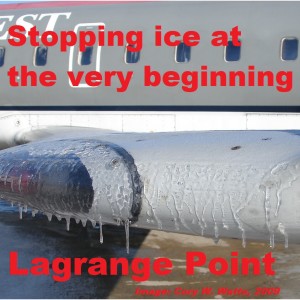
Monday Feb 04, 2019
Monday Feb 04, 2019
Water is essential for life, but if its too cold it can cause havoc on infrastructure. If it's too hot there is not enough to go around. If it's too salty its not good for organic material, and if its saturated with CO2 its even more dangerous. So how do we keep water working for us as our climate changes and we have more droughts, more polar vortexes and more power plants? This week we find out about advances in chemistry and materials science that can help make better use of water.
References:
- Peyman Irajizad, Abdullah Al-Bayati, Bahareh Eslami, Taha Shafquat, Masoumeh Nazari, Parham Jafari, Varun Kashyap, Ali Masoudi, Daniel Araya, Hadi Ghasemi. Stress-Localized Durable Icephobic Surfaces. Materials Horizons, 2019; DOI: 10.1039/C8MH01291A
- Peyman Irajizad, Abdullah Al-Bayati, Bahareh Eslami, Taha Shafquat, Masoumeh Nazari, Parham Jafari, Varun Kashyap, Ali Masoudi, Daniel Araya, Hadi Ghasemi. Stress-Localized Durable Icephobic Surfaces. Materials Horizons, 2019; DOI: 10.1039/C8MH01291A
- Neil Williams et al. CO2 Capture via Crystalline Hydrogen-Bonded Bicarbonate Dimers. Chem, 2019 DOI: 10.1016/j.chempr.2018.12.025
- Image: Cory W Watts, 2009
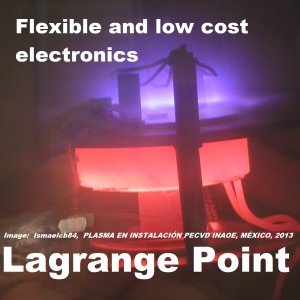
Monday Dec 10, 2018
Episode 304 - Flexible electronics, graphene transfer and paper sensors
Monday Dec 10, 2018
Monday Dec 10, 2018
Flexible electronics and phones sound like science fiction,but materials engineers are turning them into science fact. We find out about projects from across the world to make it a reality. From Australian flexible screens, to MIT's incredibly thin and exotic semiconductors to Purdue's paper based circuits for medical applications.
References:
- Linglong Zhang, Ankur Sharma, Yi Zhu, Yuhan Zhang, Bowen Wang, Miheng Dong, Hieu T. Nguyen, Zhu Wang, Bo Wen, Yujie Cao, Boqing Liu, Xueqian Sun, Jiong Yang, Ziyuan Li, Arara Kar, Yi Shi, Daniel Macdonald, Zongfu Yu, Xinran Wang, Yuerui Lu. Efficient and Layer-Dependent Exciton Pumping across Atomically Thin Organic-Inorganic Type-I Heterostructures. Advanced Materials, 2018; 30 (40): 1803986 DOI: 10.1002/adma.201803986
- Wei Kong, Huashan Li, Kuan Qiao, Yunjo Kim, Kyusang Lee, Yifan Nie, Doyoon Lee, Tom Osadchy, Richard J Molnar, D. Kurt Gaskill, Rachael L. Myers-Ward, Kevin M. Daniels, Yuewei Zhang, Suresh Sundram, Yang Yu, Sang-hoon Bae, Siddharth Rajan, Yang Shao-Horn, Kyeongjae Cho, Abdallah Ougazzaden, Jeffrey C. Grossman, Jeehwan Kim. Polarity governs atomic interaction through two-dimensional materials. Nature Materials, 2018; DOI: 10.1038/s41563-018-0176-4
- Behnam Sadri, Debkalpa Goswami, Marina Sala de Medeiros, Aniket Pal, Beatriz Castro, Shihuan Kuang, Ramses V. Martinez. Wearable and Implantable Epidermal Paper-Based Electronics. ACS Applied Materials & Interfaces, 2018; 10 (37): 31061 DOI: 10.1021/acsami.8b11020
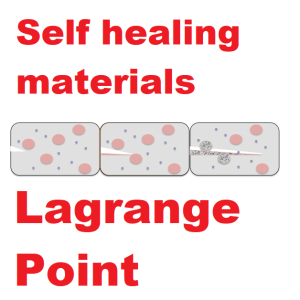
Monday Oct 29, 2018
Episode 298 - Self healing materials, scratch tests and the crockmeter
Monday Oct 29, 2018
Monday Oct 29, 2018
Self healing materials sound like science fiction, but how can we turn them into a reality? What does self healing even mean? We dive into the material science of self healing systems to find out what mechanism are used and how you can make a material heal. Plus we find out how you can make a self healing material out of common plastics using one of the weakest forces. Plus how scientists test and assess different materials including using....a crockmeter.
References:
- Marek W. Urban, Dmitriy Davydovich, Ying Yang, Tugba Demir, Yunzhi Zhang, Leah Casabianca. Key-and-lock commodity self-healing copolymers. Science, 2018; 362 (6411): 220 DOI: 10.1126/science.aat2975
- Linqian Feng, Beatrice (Nadia) Benhamida, Chen-Yuan Lu, Li Piin Sung, Pierre Morel, Andrew T. Detwiler, Jon M. Skelly, Leslie T. Baker, Deepanjan Bhattacharya. Fundamentals and characterizations of scratch resistance on automotive clearcoats. Progress in Organic Coatings, 2018; 125: 339 DOI: 10.1016/j.porgcoat.2018.09.011
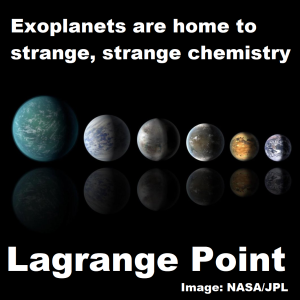
Monday Sep 03, 2018
Monday Sep 03, 2018
Exoplanets are home to some extremely out of this world chemistry. From raining diamonds, to gaseous iron and titanium, even to secret supplies of water. If we want to understand just how unique our place in the universe is, we can try and replicate the odd conditions of exoplanets right here on earth.
References
- Peter M. Celliers et al. Insulator-metal transition in dense fluid deuterium. Science, 2018 DOI: 10.1126/science.aat0970
- Sergey S. Lobanov, Qiang Zhu, Nicholas Holtgrewe, Clemens Prescher, Vitali B. Prakapenka, Artem R. Oganov, Alexander F. Goncharov. Stable magnesium peroxide at high pressure. Scientific Reports, 2015; 5: 13582 DOI: 10.1038/srep13582
- H. Jens Hoeijmakers, David Ehrenreich, Kevin Heng, Daniel Kitzmann, Simon L. Grimm, Romain Allart, Russell Deitrick, Aurélien Wyttenbach, Maria Oreshenko, Lorenzo Pino, Paul B. Rimmer, Emilio Molinari, Luca Di Fabrizio. Atomic iron and titanium in the atmosphere of the exoplanet KELT-9b. Nature, 2018; DOI: 10.1038/s41586-018-0401-y
- Goldschmidt Conference. (2018, August 18). Water-worlds are common: Exoplanets may contain vast amounts of water. ScienceDaily. Retrieved August 18, 2018 from www.sciencedaily.com/releases/2018/08/180818115758.htm
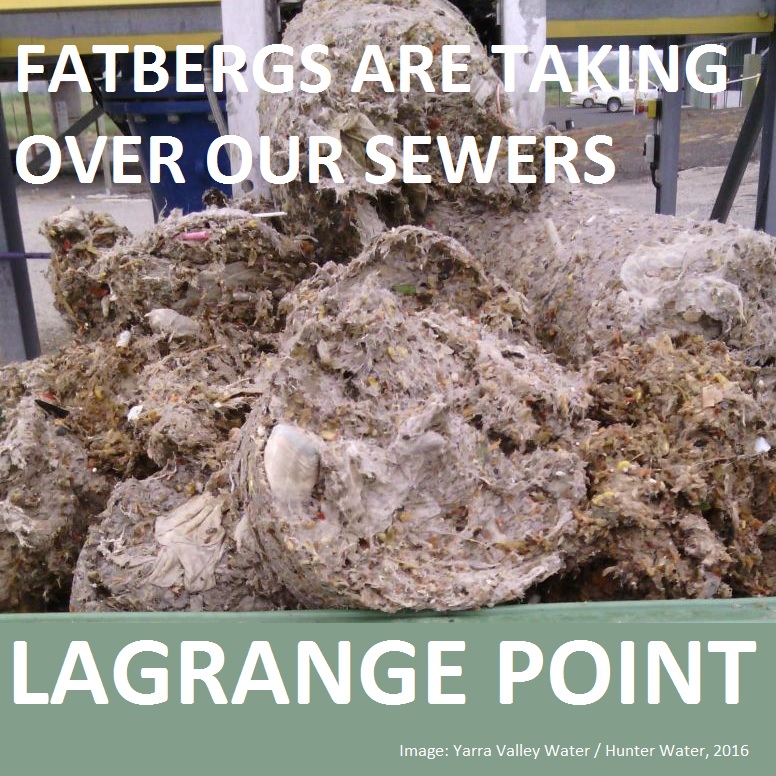
Monday Aug 20, 2018
Monday Aug 20, 2018
Keeping the world clean is a tricky job. You have to fight fatbergs, recycle large amounts of mess and even keep tanks of food clean. Fortunately material scientists keep inventing new methods, and re-applying old ones to help improve our planet. From using old mining techniques to recycle lithium ion batteries, to using oils to keep food equipment clean, plus tacking the monsters of the sewer - fatbergs.
REFERENCES
- Ruiting Zhan, Zachary Oldenburg, Lei Pan. Recovery of active cathode materials from lithium-ion batteries using froth flotation. Sustainable Materials and Technologies, 2018; 17: e00062 DOI: 10.1016/j.susmat.2018.e00062
- Tarek S. Awad, Dalal Asker, Benjamin D. Hatton. Food-Safe Modification of Stainless Steel Food-Processing Surfaces to Reduce Bacterial Biofilms. ACS Applied Materials & Interfaces, 2018; 10 (27): 22902 DOI: 10.1021/acsami.8b03788
- Asha Srinivasan, Moutoshi Saha, Kit Caufield, Otman Abida, Ping Huang Liao, Kwang Victor Lo. Microwave-Enhanced Advanced Oxidation Treatment of Lipids and Food Wastes. Water, Air, & Soil Pollution, 2018; 229 (7) DOI: 10.1007/s11270-018-3894-y

Monday Jul 23, 2018
Monday Jul 23, 2018
Solar Panels keep getting better, but what if we could have solar power even when it's very overcast? Plus is there a way to make concrete greener and less carbon intensive? What if one of those solutions also helped take care of waste product from Coal Power Plants? We look at innovative green technologies this week in Lagrange Point.
- Joshua Shank, Emil A. Kadlec, Robert L. Jarecki, Andrew Starbuck, Stephen Howell, David W. Peters, Paul S. Davids. Power Generation from a Radiative Thermal Source Using a Large-Area Infrared Rectenna. Physical Review Applied, 2018; 9 (5) DOI: 10.1103/PhysRevApplied.9.054040
- Sarvesh Kumar Srivastava, Przemyslaw Piwek, Sonal R. Ayakar, Arman Bonakdarpour, David P. Wilkinson, Vikramaditya G. Yadav. A Biogenic Photovoltaic Material. Small, 2018; 14 (26): 1800729 DOI: 10.1002/smll.201800729
- Gang Xu, Jing Zhong, Xianming Shi. Influence of graphene oxide in a chemically activated fly ash. Fuel, 2018; 226: 644 DOI: 10.1016/j.fuel.2018.04.033
- Sung Hoon Hwang, Rouzbeh Shahsavari. High calcium cementless fly ash binder with low environmental footprint: Optimum Taguchi design. Journal of the American Ceramic Society, 2018; DOI: 10.1111/jace.15873
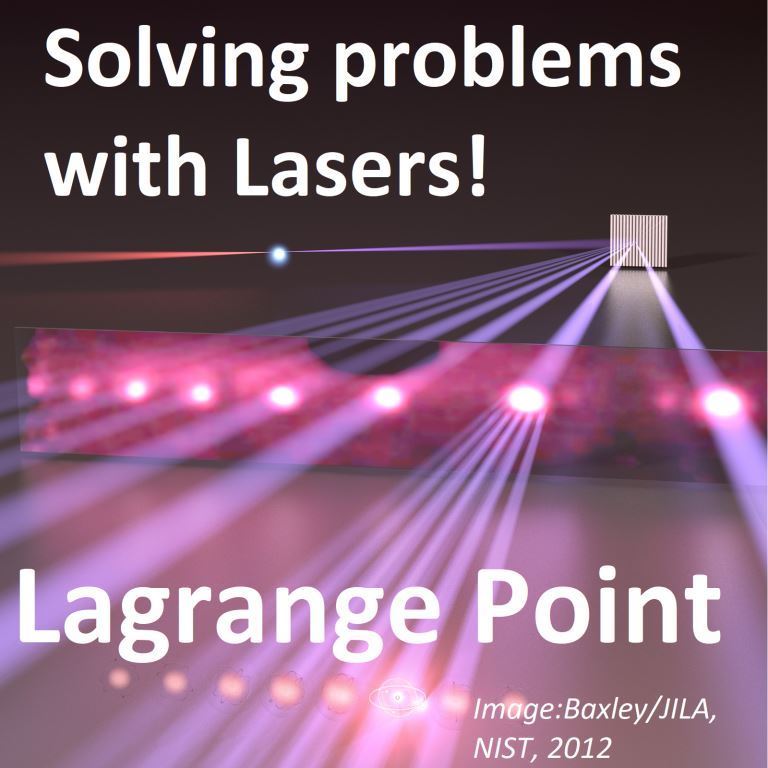
Monday Jun 11, 2018
Episode 278 - Lasers combs for wifi and detecting smells
Monday Jun 11, 2018
Monday Jun 11, 2018
Everyone loves lasers! From science fiction to the military and even scientists in labs. This week we look at using lasers to solve some unusual problems. From something deceptively simple as how to describe a smell to the complexities of better data transmission over WiFi.
- Sarah K. Scholten, Christopher Perrella, James D. Anstie, Richard T. White, Waddah Al-Ashwal, Nicolas Bourbeau Hébert, Jérôme Genest, Andre N. Luiten. Number-Density Measurements of CO2 in Real Time with an Optical Frequency Comb for High Accuracy and Precision. Physical Review Applied, 2018; 9 (5) DOI: 10.1103/PhysRevApplied.9.054043
- Marco Piccardo, Dmitry Kazakov, Noah A. Rubin, Paul Chevalier, Yongrui Wang, Feng Xie, Kevin Lascola, Alexey Belyanin, Federico Capasso. Time-dependent population inversion gratings in laser frequency combs. Optica, 2018; 5 (4): 475 DOI: 10.1364/OPTICA.5.000475
- Image: Extreme ultraviolet (EUV) frequency comb, : Baxley/JILA, 2012, www.nist.gov/pml/div689/euv_comb.cfm

Tuesday Apr 24, 2018
Episode 271 - Cleaning up our own mess - innovative new recycling methods
Tuesday Apr 24, 2018
Tuesday Apr 24, 2018
Now that China has banned importing rubbish, we really have to find innovative new ways to clean up our mess. We look at new solutions from dissolving plastic in enzymes, to making new steel from scrap cars to zero-waste phones.

Tuesday Feb 20, 2018
Tuesday Feb 20, 2018
How can we make wounds close and heal by sticking together better? Is there some kind of super strong glues that can help stick even when wet? What can we learn from spiders to help heal a broken heart? All these bio materials and more in this week's episode.

Tuesday Dec 19, 2017
Episode 253 - Smarter food packaging to cut down on waste
Tuesday Dec 19, 2017
Tuesday Dec 19, 2017
How can we cut down on waste from everything coffee to packaging? What new materials, processes and technology can help us eliminate waste and recycle more? Are there ways to turn food waste into food valued added products?

Tuesday Nov 21, 2017
Tuesday Nov 21, 2017
Unexpected journeys in science from a link between quantum mechanics and proteins, to spider silk hearing aides. We hear how scientific research can start in one place and end far far away.

Tuesday Aug 22, 2017
Episode 236 - Seeing through better windows
Tuesday Aug 22, 2017
Tuesday Aug 22, 2017
How do we make our buildings adapt to the climate around them from turning opaque and clear, to blocking only heat we dive into the science of glass.
